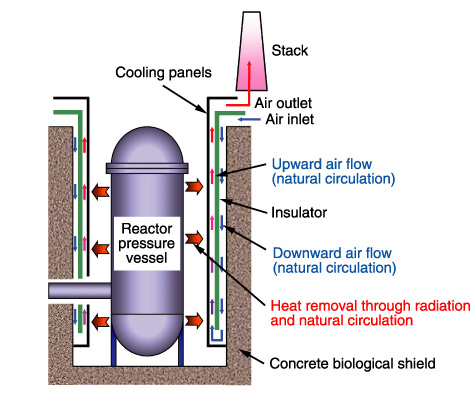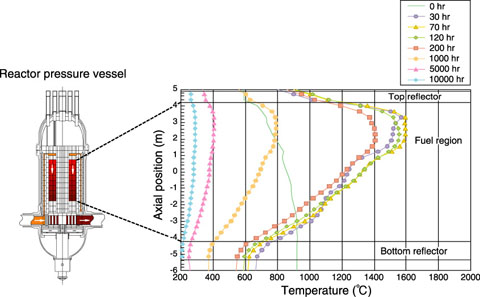
Fig.8-2 Gas-turbine high-temperature reactor

Fig.8-3 Vessel cooling system (VCS)

Fig.8-4 Fuel-temperature behavior in the case of loss-of-coolant accidents (analytical results)
The safety of nuclear reactors is a prime concern after the accident at the Tokyo Electric Power Company, Incorporated Fukushima Daiichi Nuclear Power Station. The safety of the high-temperature gas-cooled reactor (HTGR), which is a helium-cooled graphite-moderated reactor, is assured by its inherent safety features, as described below, even in the cases of a station blackout and the loss of forced cooling through the core.
On the basis of the construction and operation of Japan’s first HTGR, the High-Temperature Engineering Test Reactor (HTTR), we have performed R&D and created the basic design of a commercial gas-turbine high-temperature reactor, GTHTR300 (Fig.8-2). The fuel for this reactor consists of coated fuel particles. Uranium dioxide is surrounded by four layers of ceramics, whose integrity can be sufficiently maintained below 1600 °C and which act as the primary barrier against the release of radioactive materials. Even if the control rod is withdrawn from the core during any accident, the reactor power decreases naturally to reach a stable condition, i.e., nearly zero power level, because of the large negative reactivity feedback. Fuel integrity can be maintained because of a large temperature margin with respect to the temperature limit. Analytical results show that in the event of the loss of coolant in the primary pipe due to rupture or the loss of forced cooling through the core due to a station blackout, residual heat can be removed from the outside of the reactor pressure vessel by radiation and natural air convection by using a passive vessel-cooling system (Fig.8-3), and thus, fuel integrity could be maintained (Fig.8-4). This is possible due to the large heat capacity, high thermal conductivity, and low power density of the graphite core. The passive air-cooled dry storage without a storage pool, which ensures heat removal even in the case of a station blackout, can be used for the storage of spent fuel because of its low power density due to decay heat.
In addition to the design of GTHTR300, the inherent safety features of HTGR are demonstrated by tests on HTTR, simulating the anticipated operational occurrences and accidents. The test simulating a station blackout is scheduled.
Through these R&D activities, we are aiming to offer an HTGR with the highest safety standards that is acceptable to the general public in Japan and international society.
<Previous: 8 Nuclear Hydrogen and Heat Application Research | Next: 8-2 >